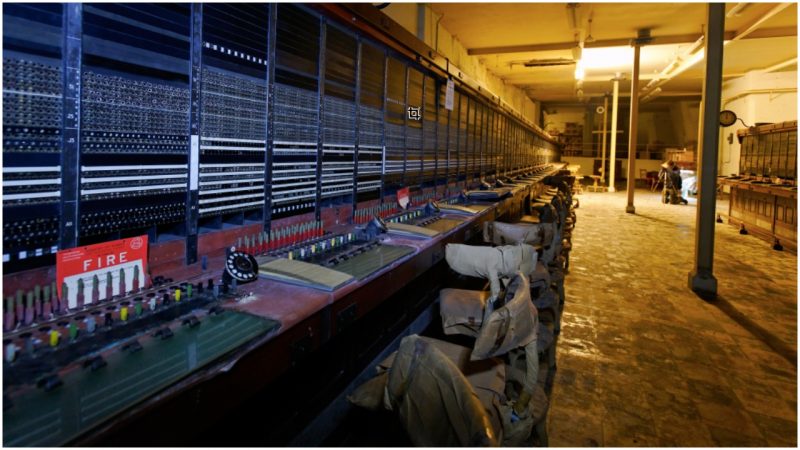For 40 years, an urban fortress lay 120 feet beneath the quaint town of Corsham, Wiltshire, about 100 miles due west of London. Known to only a few high-ranking members of the British military, the secret underground city was constructed as an Emergency War Headquarters meant to house 4,000 government workers in the event of nuclear catastrophe.
In the 1950s, with the Cold War escalating between the super powers of the U.S. and the U.S.S.R., no one was immune to the fear of nuclear war, least of all the British, who’d seen their country decimated during the Blitz of World War II. In just one London raid, 430 people were killed and over 1,600 were seriously wounded.
With the threat of war hanging over the country like a dark nuclear cloud, Britain’s Cabinet Office decided an alternative headquarter site was necessary in case of disaster; officials feared that as many as 35 nuclear bombs would target London, killing and injuring millions and destroying the country’s industries and housing stock. This gave rise to the Central Government War Headquarters, in Corsham, tasked in 1955 with creating Emergency Headquarters for government personnel.
The site was the 240-acre abandoned Spring Quarry, which had once produced limestone and from which many of the buildings in nearby Bath were constructed. During World War II, the Ministry of Aircraft had requisitioned the Corsham Tunnels and turned them into an underground airplane manufacturing facility.
Meant to ensure the safety of 4,000 government staff for 90 days of thermonuclear war, the Burlington Bunker—one of the project’s many code names that stuck—had 100-feet-deep reinforced concrete walls, one of the world’s largest telephone switchboards lining two walls of a room with parquet flooring, and even a BBC broadcasting studio to communicate with survivors, according to photos obtained by Business Insider.
The 35-acre secret underground city was accessed via hidden entrances; the facility was divided into 22 “areas” connected by a network of about 60 miles of sign-posted streets mapped on a grid, over which residents would travel in electric go-Karts.
There were two canteens for dining, with wall-mounted chalkboards on which to list daily menu options. Bathrooms were outfitted with long rows of communal sinks. A public address system, complete with a record player, allowed communication across the areas. Special separate rooms were created to house the prime minister, the British government, and the Royal Family—the only rooms on the site with the rare luxury of having been painted.
An underground lake and treatment facility would provide drinking water and power massive generators, according to the BBC. An elevator was installed to move personnel between levels. A ventilation system could shut off circulation of outside air, in the event of a gas attack.
In order to serve and feed an underground village, the canteen included 225 tables, 2,320 dinner plates, 2,320 tea cups, 1,152 tumblers, and 11 tea trolleys, according to historian Nick Catford, who catalogued the bunker’s contents in his 2012 book, Burlington: The Central Government Emergency War Headquarters at Corsham.
The site, as we know today, was never used. It was maintained until 1991, with a skeletal staff of four, at which point upkeep was deemed to expensive to continue. The site was officially decommissioned in 2004. The handsets of rotary phones were still encased in plastic wrap. A gleaming coffee machine stood atop a white counter in the canteen. Ovens with labels still attached had never been turned on. Wires meant to connect to telegraph machines hung from ceilings—a technology that had become by then hopelessly obsolete.
And in another sign of a bygone era, the living areas had a plentiful supply of something that was essential to passing days of tension and stress—ashtrays.
